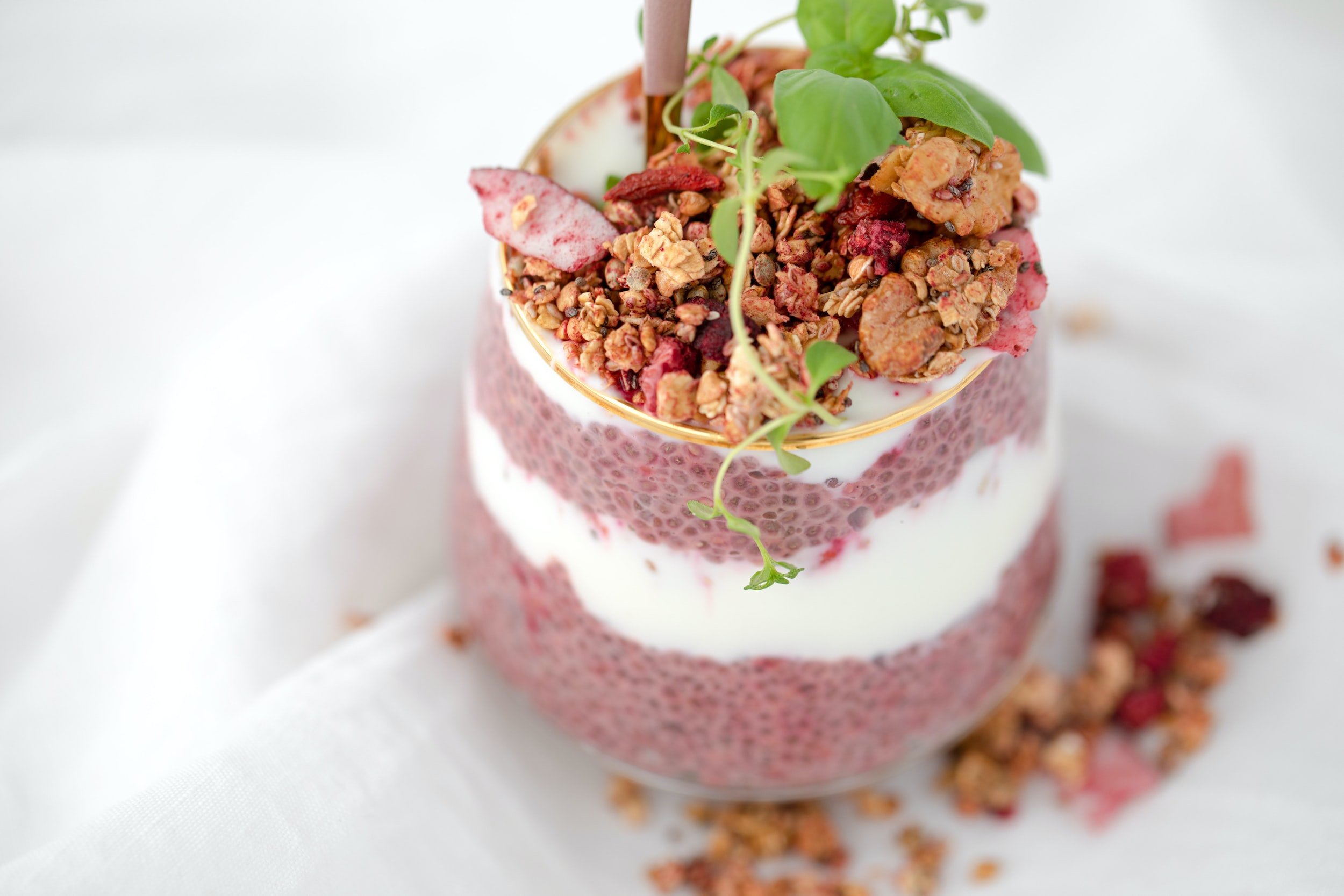Breaking Down the Mediterranean Diet
I’m sure by now you’ve heard of the Mediterranean Diet. It’s usually the go-to “diet” whether you have heart disease, high cholesterol, high blood pressure, menopause or something else. But do you actually know what this style of eating is, or why people defer to it so often? Let’s break it down, and see how it supports a healthy heart and body.
But first, real quick…I’m going to be using the word “diet” a lot in this post. I am not referring to some calorie counting/restrictive form of eating, as we typically think when we hear the word “diet.” I simply mean a style of eating, that’s all.
So What Is the “Mediterranean Diet?”
The Mediterranean Diet, or MD, is a style of eating most common in, you guessed it…the Mediterranean! It’s high in fruits, vegetables, whole grains, legumes, healthy fats, fish, full fat & high quality dairy and some lean meats & poultry. Just as important as what’s in the MD is what isn’t: refined sugars and processed foods. Can we be honest here? It’s the way humans are supposed to eat.
There are many countries that make up the Mediterranean, meaning the MD actually has many different nuances, depending on where you are. If I had to make a guess, we typically think of the MD as foods we’d find in Greece and Italy, maybe a little Spanish cuisine, maybe a little Croatian. But did you know the Mediterranean also includes countries like Turkey, Lebanon, Tunisia, Egypt & Morocco (among others)? So depending on where you are or perhaps your own background, your MD may look slightly different from someone else’s, and that’s okay!
Also, it’s important to note that the MD is not a vegetarian diet, however it leans heavily on plant-based foods. Fish is common on the MD, as well as some lean meats, especially poultry, otherwise you’ll find a lot of produce, legumes and whole grains.
What’s So Great About it Anyway?
I already listed what food groups are considered part of the MD, but let’s break that down a little bit more.
Fruits & Vegetables. This is pretty obvious, but let’s take a second anyway. The MD is plant-heavy, meaning there is some consumption of meat, but the focus is on plants, especially those grown locally. Plants (fruits, veggies, grains, legumes) are loaded with something called phytochemicals. These are chemical properties that provide significant health benefits to humans. I’m talking immune support, cardiovascular support, respiratory support, bone & skeletal support, hormonal support, anti-cancer support; the list goes on and on. We can’t get phytochemicals from meat, nor can we get them from processed foods 😉. No doubt these phytochemicals are the backbone that make the MD such a healthy diet. In addition, fruits & veggies are loaded with essential vitamins and minerals that keep our bodies functioning and alive.
Whole grains. Unfortunately, the Standard American Diet (a.k.a., SAD), has villainized many of the wrong foods, whole grains being one of them. It’s more of a guilty-by-association situation, whereby whole grains are considered carbs, and somehow carbs are bad. No. No no no. We need carbs!! Without carbohydrates we wouldn’t have any energy; they fuel our brain, our nervous system and yes, our heart. They are also full of fiber and other vitamins & minerals, such as vitamins A, B & E, and iron. But listen, there is a BIG difference between highly processed white bread and quinoa. And just because we need them, doesn’t mean we need an excess of them.
Legumes. Legumes include beans, lentils and peas. Just like the other plants listed already, they are full of antioxidants that help protect the body against free radicals, inflammation and more. They are also high in plant protein, as well as phytochemicals, fiber and vitamins & minerals.
Healthy fats. I wrote at length about the importance of healthy fats in our diet here. The MD focuses mostly on extra virgin olive oil, staying far away from trans fats and other highly processed oils. The MD is pretty low in saturated fats, instead focusing on unsaturated fats which are full of omegas and essential fatty acids.
Dairy. Dairy can be another controversial topic, but the reality is that the MD incorporates a reasonable (read: not in excess) amount of high quality dairy, particularly cheese and yogurt. Yogurt (especially Greek yogurt) is a fantastic source of calcium, protein, B vitamins and even probiotics.
Fish & meat. The MD focuses primarily on fish, but does include some lean meats and poultry. Fish, in particular salmon and sardines, are high in omega-3s and 6s, which are the big hitters when it comes to heart, brain and, frankly, overall health. White fish and shellfish are other good options, too (grilled shrimp on a salad, yum!). Meat, like grass-fed beef, lamb and pork are great sources of heme-iron and protein, but can be higher in saturated fat and are eaten only on occasion on the MD. Pasture-raised poultry, on the other hand, is a great lean animal-protein option to incorporate throughout the week.
Should I Adopt the Mediterranean Diet?
I think it’s safe to say we can all benefit from this style of eating. It’s packed with essential nutrients, phytochemicals, fiber, protein…everything humans need to survive and thrive (and avoids everything we don’t need!). Generally speaking, the MD should be good choice for everyone; however, before starting any new eating regimen you should always consult with a nutritionist and/or your healthcare provider. Depending upon your current health, goals or concerns, the MD might look slightly different for you than your friend, so it’s always best to consult a health professional first.
Questions?
Leave them in the comments below!



